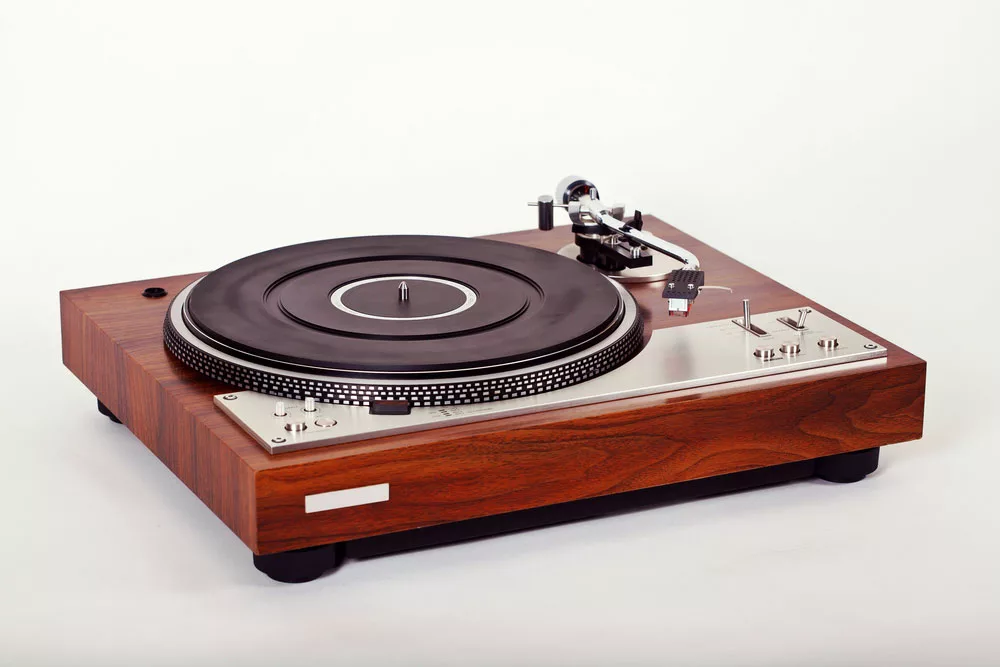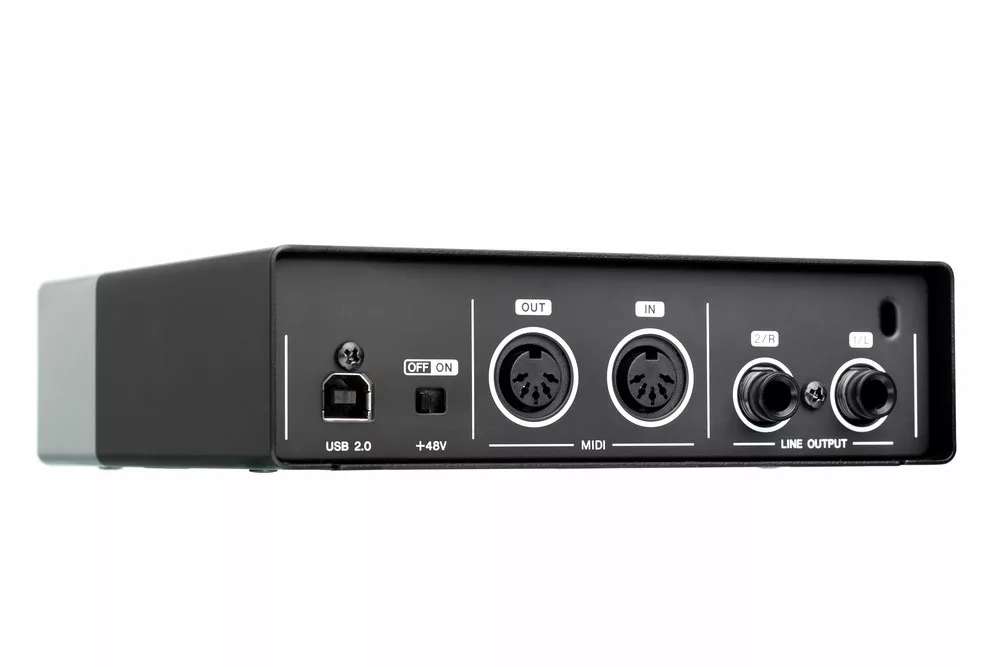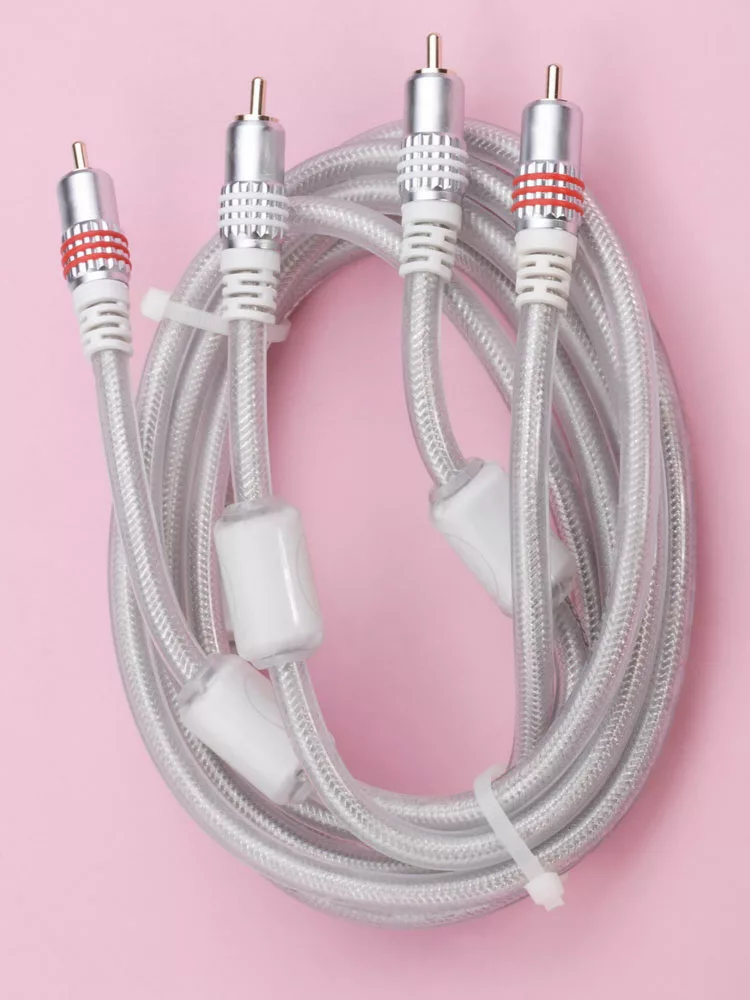In the audio field, different cables are suitable for various Hi-Fi equipment. Namely, interconnect cables and phono audio cables. They have different connectors. Are they the same thing?
Table of Contents
- What is A Phono Input?
- A PHONO Signal vs. A LINE Signal
- What Is A Phono Preamp?
- Differences Between an Internal preamp and External Preamp
- How To Tell If You Already Have A Phono Preamp
- How To Connect A Phono Input
- Where to Place a Phono Preamp
- Conclusion:
What is A Phono Input?
The phono input is an audio port placed on different sound devices like amplifiers, preamplifiers, or Hi-Fi stereo receivers. It can facilitate the transmission of signals from analog turntables that help boost RIAA equalization, resulting in the recreation of authentic sounds.
Such records are recorded with increased high and decreased lower frequencies due to these processes. However, as you playback, the frequency responses are reversed to any audible background. Also, most A/V receivers have this input to raise the number of available sound options.

Caption: Turntable
A PHONO Signal vs. A LINE Signal
When dealing with a phono audio cable, we must first look at some differences between a phono and a LINE.
The Signal Level
Users get a consistent signal level of about 0.316 Volt RMS with a LINE signal. If you purchase a Sony DVD player, a Pioneer CD player, or a Bluesound digital streamer, their analog outputs will all have the same signal levels (0.316 Volts).
In the case of a phono input, the signal level is much weaker and not standardized. Therefore, the signal levels will vary from one turntable to the next, depending on your phono cartridge. Normal phono signal levels are around 0.02 volts when working with a low-output cartridge to 7 volts for a high-output cartridge.
Most cartridges in electrical and equipment stores and turntables have a phono signal of about 5mV. The LINE signal is approximately 50 to 1500 times more potent than its phono signal counterpart.
A phono preamp can boost the phono signal before it reaches the amplifier section (line level). It is critical for users who wish to strengthen the weak signals emitted by turntables and improve audio quality before it is amplified via your speakers.
The RIAA Equalization
Vinyl curved records have reduced low frequencies/bass and increased high frequencies/treble. When played on a home stereo, the low-frequencies/bass get boosted while its high frequencies are reduced. Therefore, resulting in a flat frequency output, a process known as RIAA equalization.
The primary reason the bass is lowered and the treble raised during the creation of the record is that the reduced frequencies have broader grooves and take up more room on a record. As a result, to get an increased recording time or an additional number of songs laid down, the bass has to be lowered to ensure the grooves are narrow enough.
At the end of the process, the phono signal emitted from the cartridge will not have any bass but rather too much treble. The RIAA aims to correct this during the phono stage or preamp.
So, a LINE signal offers a flat frequency curve, whereas its phono counterpart produces reduced bass and high treble.
What Is A Phono Preamp?
Phono preamplifiers or phono stages are audio components that amplify the signal emanating from a turntable. Therefore, users can connect the preamp to their sound system like they would with an auditory source of any other kind. Remember, manufacturers designed phono stages to accept low-level signals. Therefore, you should not plug them into devices like a CD player, as you risk damaging the components.
In addition, phono preamps facilitate RIAA equalization curves as they relate to a signal and revert it to its original recording shape.
Phono preamps are available in two groups of cartridges that can go on a turntable: a moving coil (MC) and magnet (MM) type.
Since a moving coil has lower output levels than its MM counterpart, it requires additional amplification. An upgraded cartridge (MM) usually has a satisfying coil setup and will require a phono preamp that can handle the extra boost.
Fortunately, almost every phono stage currently on that market can accommodate an MC and MM cartridge.
Linking an MC cartridge to an MM phono stage usually produces quality sounds, but more is needed. On the other hand, if you connect an MM cartridge to an MC phono input, you’ll observe the sound get distorted.

Caption: Phono Preamp
Differences Between an Internal preamp and External Preamp
However, while internal preamps seem like an ideal way to save on space and enjoy high-quality sounds, you should keep your turntable and phono preamp separate sometimes.
An internal preamp
With a turntable and preamp in the same unit, you can instantly send music out of the amplifier without any significant signal loss. Also, acquiring a turntable with an already built-in preamp is cheaper than purchasing separately.
An external preamp
Because of the noise issue, you should keep your preamp separate from your amplifier.
When working with an integrated setup, you can expect that some corners will have to be cut to make it more compact. Instead of housing a preamp in a specific device, manufacturers hoping to integrate the functionality of this system opt to use sub-standard or cheaper components. As a result, the resistors, capacitors, and circuit boards will not function as well in amplifying a turntable’s signal to a line level compared to a unit with ideal internal components. Therefore, it’s important to remember that stand-alone units tend to have better features capable of transmitting and amplifying sound.
So, if your main goal is high-quality sound, the only way to go is external.
How To Tell If You Already Have A Phono Preamp
Before you look for your next phono stage, you must find out whether or not there is one already. If there is, you can upgrade it to get better sound quality.
One of the more apparent indicators is having a standard box with a pair of inputs and outputs, a small screw (a ground type), and a phono label. Once you see all these features, you can safely assume that you have a phono stage.
Some other ways you can find out include conducting evaluations on the following devices:
The Turntable
Modern turntables are usually made with a built-in phono stage. As things currently stand, there’s no apparent reason as to why this is the case. When you look at these devices, it is common to find affordable suitcase turntables with inbuilt phono stages. However, to sweeten the deal, manufacturers can also go for high-performing turntables, such as the VPI player or Shinola Runwell. But if you’re still unsure whether your turntable has one, connect it to your setup, and if the volume is okay and has no distortion, then yours probably has a built-in phono stage.
Receivers
Any vintage amp or receiver produced before 1980 will likely have a built-in phono system. To determine if this is the case with yours, check the back of your amp, where you should find a set of right and left connections. They will probably have a label indicating the presence of a phono and ground screw. Most new receiver and amp versions don’t have a built-in phono preamp.
As with the turntable, to determine the presence of a phono preamp in your receiver, connect your device and determine if the sound is okay to indicate a phono stage is present.
Powered speakers
High-powered speakers have emerged in the past couple of years that has managed to make their way into the market. Users can have them as small bookshelves or computer systems. Furthermore, such speakers can be utilized as a part of a vinyl playback system since some already have built-in phono stages.
How To Connect A Phono Input
Before connecting your phono input, you will need a pair of phone audio cables or/and interconnect cables.
Phone audio cables
These cables are designed for 10 ohms and 0.2 millivolts impedances. Also, the function of phono cables requires a low capacitance of about 80 pF and below. In addition, the resistance levels must be low for it to operate.
A primary function of the phono cable is to link the tonearm on your turntable to the phono preamp. The application usually happens when dealing with Hi-Fi platforms with a vinyl setup.
Indeed, it’s common for a Hi-Fi machine to have a phono input in place. You can use the cable to link your device to other audio platforms, such as an amplifier.
But even with such an option, it’s still rare to see it in practice. That’s because the phono input in amplifiers does not allow a user to take full advantage of their analog source, especially if you’re installing an MC cartridge with low output on a turntable. With such limitations, the likely solution is to secure a phono preamp for your audio system. In such cases, the best thing to do is to place the cable between your preamp and the turntable.
Often, you’ll find that several connectors accompany this cable, including
- RCA/RCA
- L shape RCA/DIN
- Straight RCA/DIN
Interconnect cables
If you’re working with phono preamps, a second cable, an interconnect cable, is necessary for linking your phono setup to your amplifier. Sometimes, you can get these cables with different connectors, such as XLR, RCA, and DIN.
The interconnect cable’s design allows it to carry different kinds of signals. Also, it has extraordinary output sources. Additionally, the cable is known for having several unique characteristics, like being resistant, having capacitive capabilities, and allowing the transmission of a signal greater than 1V RMS. Further, the interconnect cable has impedance levels of 10,000 ohms; in certain situations, this impedance can be as high as 47,000 ohms.
You can use this type of cable for different setups. For example, suppose you have a turntable with an assimilated RIAA preamplifier. You can use interconnect cables to link a turntable to your amplifier or other audio/Hi-Fi machines directly.

Interconnect cables
Phono Preamps Vs. Amplifiers
These two components are essential for anyone using a vinyl record player. Like the frequencies produced by a microphone, turntables usually have a relatively weak signal that has to be boosted before it can reach the amplifier stage. For phono preamps, they are positioned close to the start of the signal line, so the weak ones are preamplified before being processed by the amp.
Where to Place a Phono Preamp
When plugging audio components, it is vital to remember that the ‘humming’ sound is never a good sign. You can avert this by following a couple of simple steps.
First, avoid putting your phono preamp on any item that has an amplifier. Those components typically have an enormous power transformer capable of emitting a hum field that phono preamps pick up if they don’t have enough shielding. You can find this out by picking up your receiver or amp to check if its weight is on one side, suggesting it could have a big transformer inside.
Tie the power cables to each other to ensure they are neatly packed to avoid creating a humming sound. Also, avoid running power cables parallel to each other and, if possible, cross them at a 90-degree angle.
Often, some believe they can upgrade a turntable with an already built-in stage. They imagine they can plug those outputs into a better version of the phono stage. However, the result is that you will end up blowing it up or getting distorted sounds.
Conclusion:
When it comes to a Hi-Fi device’s connection, you must apply some basic technical rules. Also, learn how to use the right cable and place it correctly when setting things up. Thankfully, the information provided above can help you undertake such tasks. The key is understanding the primary differences between the two cables (phono and interconnect cables), so you can apply them effectively and productively.
